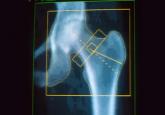The article, “Bone disease in patients with kidney disease: A tricky interplay” (J Fam Pract. 2016;65:606-612), incorrectly stated: “Elevations of both fibroblast growth factor 23 (FGF23) and parathyroid hormone (PTH) lead to hyperphosphatemia and hypocalcemia because of decreased urinary excretion of phosphorus.” In fact, FGF23 normally acts to lower blood phosphate levels. Furthermore, an elevated phosphorus level causes an increase in serum calcium levels and not hypocalcemia. This sentence, and the 2 that followed it, should have read:
“Elevations of FGF23 lower blood phosphate levels by inhibiting phosphate reabsorption in the kidneys, thus increasing urinary excretion of phosphorus. Secondary hyperparathyroidism, driven by hypocalcemia, responds to normalize serum calcium levels by increasing the number and size of osteoclasts actively breaking down bone matrix. This increased level of bone breakdown escalates fracture risk.”
This information has been corrected in the online version of the article.
